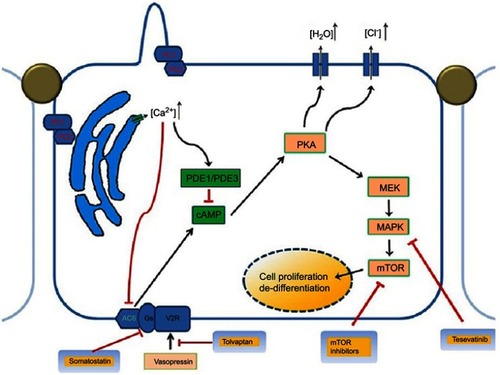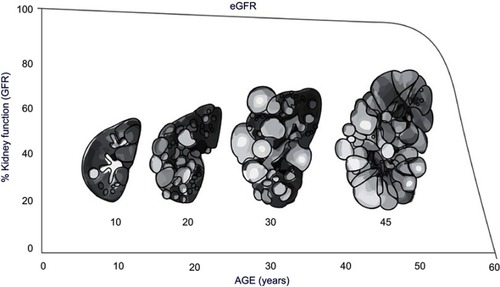Figures & data
Table 1 How autosomal dominant polycystic kidney disease affects the kidneys
Figure 1 Pathophysiology and genetics of autosomal dominant polycystic kidney disease showing the multiple abnormal signaling pathways.
Abbreviations: cAMP, cyclic adenosine monophosphate; MEK/MAPK, mitogen-activated protein kinase enzymes; mTOR, mammalian target of rapamycin; PC1, polystin-1 receptor, PC2, polycystin-2 receptor; PKA, protein kinase A, PDE1, phosphodiesterase isoform 1; PDE3, phosphodiesterase isoform 3.

Table 2 Unified ravine criteria for autosomal dominant polycystic kidney disease
Figure 2 Increase in kidney size and decrease in kidney function estimated by eGFR Correlated with age.

Table 3 Risk factors for rapid autosomal dominant polycystic kidney disease progression
Table 4 Therapies slowing the progression of autosomal dominant polycystic kidney disease (ARPKD)
